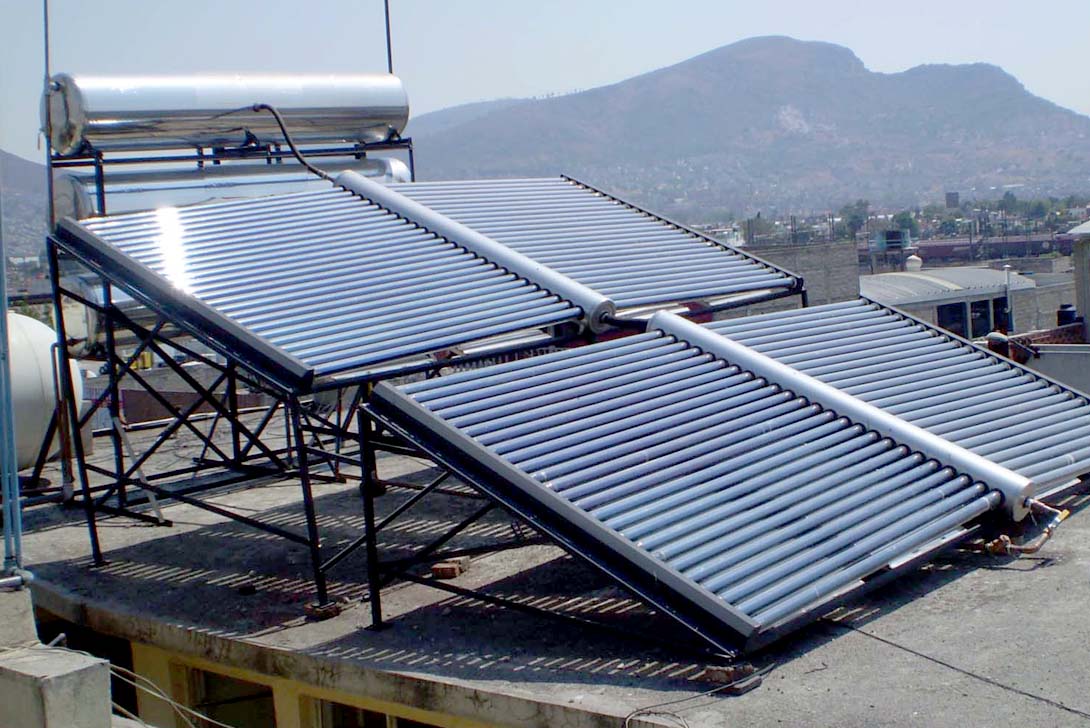
A solar water heater is the most competitive alternative to conventional water heating methods such as electric geysers and fuel-fed boilers.
It makes an attractive and sustainable option, with its global distribution, pollution free nature, virtually inexhaustible supply and near-zero operational cost. Solar water heaters run on a free fuel (i.e. sunshine), thus saving on energy costs that help recover its initial cost in just 2-4 years
Solar Water Heating Potential
We are blessed with solar energy in abundance, which is absolutely free of cost. India, receives solar energy more than 5,000 trillion kWh per year, which is far more than its total annual consumption. The global radiation is around 5 kWh per sq. m. per day with the sunshine ranging between 2300 and 3200 hours per year.
Though the energy density is low and the availability is not continuous, by providing appropriate storage, it is possible to harness this abundantly available energy in a reliable manner for many purposes. This can be achieved by converting it to usable heat or through direct generation of electricity. The conversion systems are modular in nature and can be appropriately used for decentralized applications.
The Government of India has, in effect, approved a policy to extensively promote the development of solar energy in the country by launching the Jawaharlal Nehru National Solar Mission (JNNSM). This National Solar mission is a major initiative of the Government of India and State Governments to promote ecologically sustainable growth while addressing one of the country's biggest challenges i.e. saving energy.
The National Action Plan on Climate Change (launched on June 30, 2008) also points out that India, being a tropical country, avails sunshine for longer hours per day and in greater intensity. Solar energy, therefore, has great potential as a future energy source. It also has the advantage of permitting the decentralized distribution of energy, thereby, empowering people at the individual level to harvest their own share of solar energy.
Electricity/Diesel Savings
A 100 lpd system (2 sq. m of collector area) installed in a home can save 4-6 units of electricity/day depending on the place of installation & hot water use. On an average, it could be taken as 5 units/day. Maximum average saving with 300 clear days, therefore, could be taken as 1500 units/year.
Assuming 300 days of solar hot water use in Bangalore and 150 days in Delhi, the savings could be 1500 & 750 units per year respectively i.e. replacement of a 2 KW electric geyser working for 2 hours in a day. Considering all parts of the country and maximum installations in areas where hot water requirement is more during the year, average saving could be taken as 1200 units/year/100 lpd system. 1 million such systems installed will be able to save 1200 million units of electricity/year.
A 100 lpd system (2 sq. m of collector area) installed in an industry can save around 140 litres of diesel in a year.
Peak load shaving
1 system of 100 lpd can replace an electric geyser of 2 KW capacity in a home..
1 million such systems will replace 1 million geysers of 2 KW capacity each in homes. Assuming that atleast 50% of geysers are switched on at a time, this will have a peak load shaving of 1000 MW.
CO2 Reduction
A 100 lpd system on an average saves up to 1500 units of electricity/yr. To generate that much of electricity from a coal based power plant, 1.5 tons of CO2 /year is released in atmosphere. One million solar water heating systems installed in homes will, therefore, also result in reduction of 1.5 million tone of CO2 emission in atmosphere.
